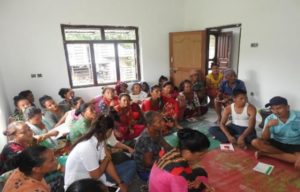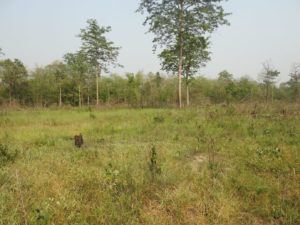Interim report summary
This Human/Tiger Conflict project funded by WildCats, builds on recent work by ZSL in the Parsa National Park extension area. After spending four years, assessing, monitoring and protecting this area which was formally added to the National Park in 2015, and following a successful increase in the wild tiger population, there is a need to address the potential for future escalation of Human/Tiger Conflict (HTC).
To enable growing populations of tigers to remain in the core areas and use buffer zones, the project builds on these initiatives by improving the access to high-quality habitat resources within the core area of park, while reducing access to livestock, which will in turn lessen the relative attraction for wildlife to enter human settlements.
ZSL’s tiger recovery model has highlighted that no matter how well protected core sites become, tiger populations will always remain fragile if they are not supported by the local communities sharing the landscape. In the Parsa-Chitwan Complex, these communities are growing and compete for resources with tigers and tiger prey, in terms of the need for land, forest resources (such as cattle fodder) and livestock. Predation, human fatalities and other forms of HTC create an incentive for retaliatory killings. Negative views of conservation are then made worse by low awareness in the communities.
By working with Community Forest User Groups, the project identified households vulnerable to HTC and introduced the concepts of “Participatory Approaches to Corridor-Coexistence with Tigers” (PACCT) & HTC relief. Altogether, 108 community members took part in three programs. Out of these, 30 community members were identified as those who would benefit from the means to construct and maintain predator proof corrals.
To improve the local prey base, three participatory Habitat Management workshops have been completed. All three workshops focused on vulnerable communities that were identified through previous community consultation meetings. Altogether, 129 community members participated in these workshops. Grassland management in the extension area of PNP was carried out in March and April 2019. The extension area has become an important habitat for the threatened rhino, tiger, elephant and other wildlife. The management involved selective cutting of trees and removal of seedlings and saplings to avoid risk of conversion of area into woodlands in near future. Also, uprooting of invasive species like Lantana camara and Mikenia micrantha, that severely affect the growth of grass species was done. Following this, controlled burning was done to help the sprouting of new grasses and plants which are palatable and attracts number of prey species.
Household surveys were conducted at two different sites within the communities of the Forest User Groups. Altogether 48 people were surveyed regarding tiger conservation issues and their attitude towards tiger conservation and conflict mitigation. Out of 48, 30 respondents were female and 18 were male. The survey provides a baseline on attitudes of community people towards tiger conservation. The change of people’s perception and impact of the project will be compared and presented at the end of this project by doing a similar survey.
Take a look at this short video captured remotely by the ZSL monitoring team. © ZSL/DNWPC
Read the full report here

Conflict workshop © ZSL

Habitat before grassland restoration © ZSL

Habitat after grassland restoration © ZSL


